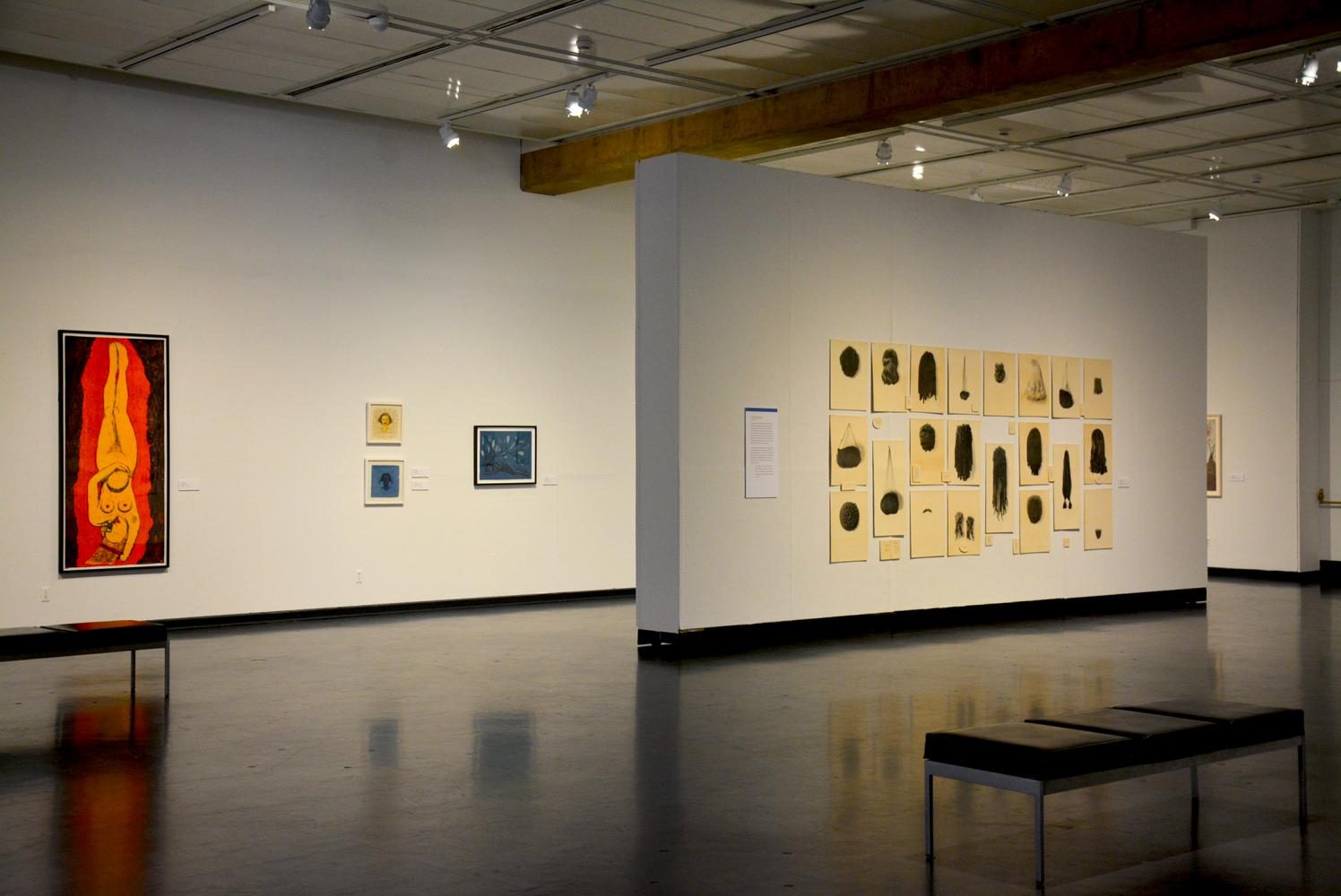Giving women a voice through arts
The WSU Museum of Art presents the work of six contemporary women printmakers
HARRINA HWANG | The Daily Evergreen
The WSU Museum of Art has opened an exhibit focused on female artists and the ways they contribute to artistic discussion. The exhibit features artwork from Africa, Asia, and North America.
August 24, 2017
Art often represents self-expression of human experience in visual form, opening up a dialogue for its audience to explore and interpret for themselves.
The “Contemporary Women Printmakers” exhibit opened on Tuesday in the WSU Museum of Art, featuring six female printmakers from around the globe, including China, Kenya, and the U.S. Printmaking refers to the creation of a printer plate, applying ink and then pressing plate onto paper. This ranges from etching a wood block to use of modern-day digital printers.
Zachary Mazur, co-curator of the exhibit, developed the exhibition after taking a gender, power and identity class, looking at the museum’s goals and messages they represent. For example, art has the ability to intervene by creating a discussion about gender and race oppression, he said. The artists shown in this exhibit are primarily women of color.
“One thing that art does different from being lectured at or just reading is that you have the chance of bringing your own experiences in to understand what it might have felt like to be this artist,” Mazur said, “and how it relates to your own values.”

Ryan Hardesty and Zack Mazur, co-curators at the WSU Museum of Art, talk about how contemporary women printmakers are important to help educate students about empowering female artists.
Fellow exhibit co-curator Ryan Hardesty added that museums have had a disparity between representation for a long time, between male and female artists in exhibitions, especially for people of color. Now, the museum has the perfect opportunity to make some change in the right direction, he said.
The WSU art museum benefits by drawing from the Jordan Schnitzer Family Foundation collection, Mazur said. As one of the museum’s largest donors for the recent museum expansion, part of the agreement with WSU includes use of his collection. The works are strictly for educational purposes and provided to universities free of charge, Mazur said. Because Schnitzer has been collecting for many years, he has an expansive selection to choose from to build exhibits.
“You don’t get to see world-class art for free, typically,” Mazur said. “All we have to pay for is shipping.”
Mazur said he selected the art pieces through a long process of looking through Schnitzer’s collection. The artwork became sorted down to “women,” then “women of color,” seeing who’s available in that collection, narrowing the collection down further, he said.
Once narrowed down, Mazur decided to look at the artist, the context and do a little research on each of them. This primarily fell upon women of color, addressing gender oppression, race and sexuality, Mazur said.
“All of these artists are contemporary. They’re living, creating, currently making work,” Mazur said. “When you bring in a prolific group of artists that are part of the conversation, even this week, politically and socially, this is what’s happening and there’s no better time to take historically underrepresented artists and provide them a greater voice.”
Another theme threading through the exhibit includes figuration, Hardesty said. Artists reflect upon the representation of the female body, which goes back to the idea around identity formation.
This exhibit encompasses all issues, regardless of race or sexuality, Mazur said. It becomes about global intersectionality.
For example, in Wendy Red Star’s work, she pokes fun at the portrayal of Native Americans. Edward Curtis, a white, pioneer-type male who went to photograph Native Americans in the early 20th century, often over-embellished his photos, Mazur said. Subjects wore their war-bonnets and beads, things they wore only during ceremonies. It represented a white male’s perspective of what American Indians should be, he said. Red Star mocks that post-colonialism in her work by picturing herself ornate and beautiful in full dress, but in a sanitized, artificial environment.
This exhibit mainly shows the concept of power, or lack thereof, in some cases. And it represents a reclamation of that power, Mazur said. Art has the ability to communicate those concepts.
“It’s like a ‘choose-your-own-adventure’ book,” Mazur said. “People can bring their own experiences into conversation and change the outlook of things, too.”
Some pieces will make people uncomfortable, he said. But the goal is to dislodge expectations and assumptions. The social justice aspect in this gallery represents the most important thing.
At the end of the exhibition, on Nov. 17, Wendy Red Star will give a guest lecture at the closing reception. Admission to the gallery is free.
“Museums are non-traditional classrooms, but they are classes for dialogue-based learning,” Mazur said. “You learn from each other, from your peers.”









